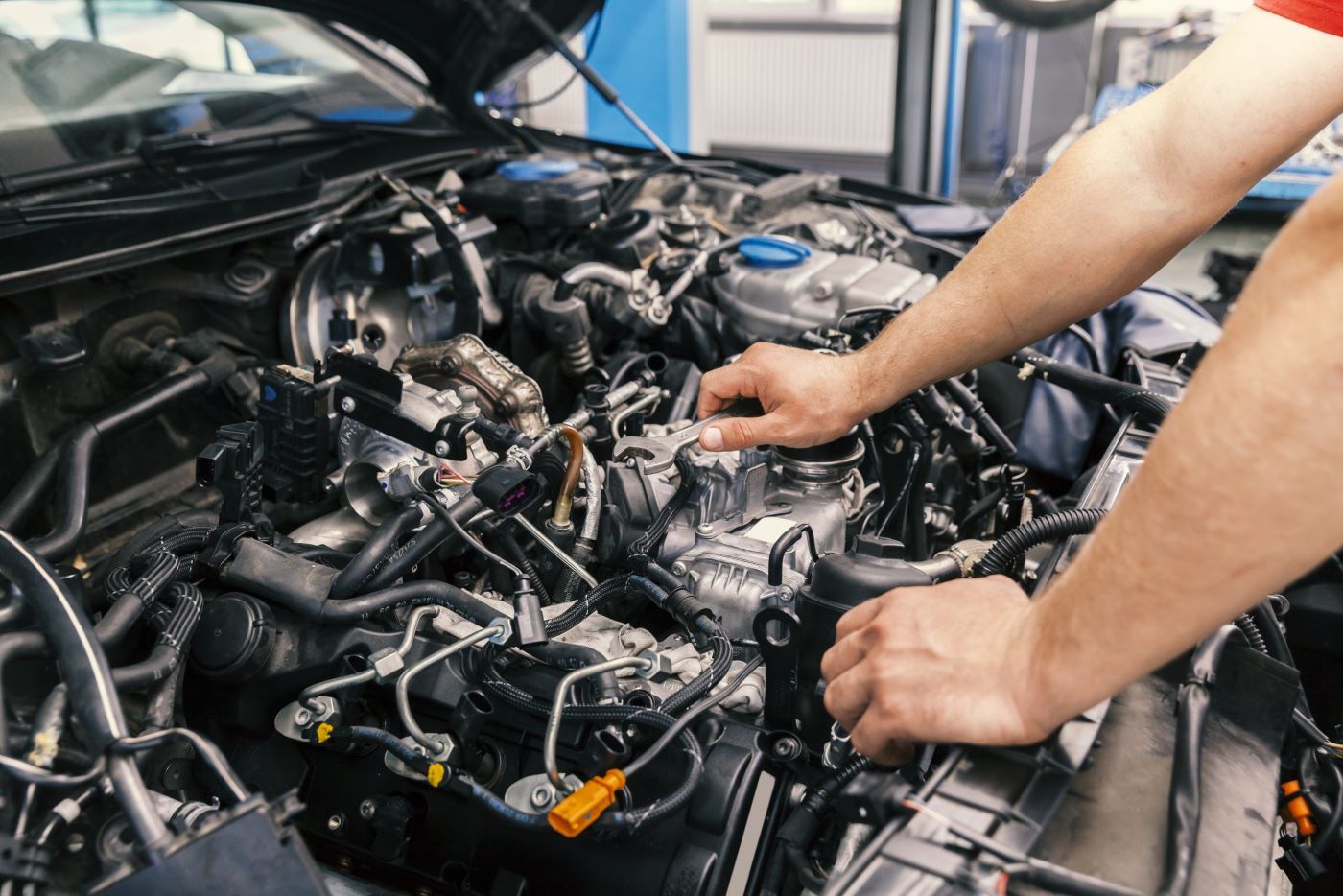Summertime means it’s time to hit the road. Even with gas prices reaching record highs, Americans continue to chase sunny weather and the freedom of a road trip. 31.7 million people planned to drive over Memorial Day weekend in 2008, despite fuel costs being roughly 60 cents more per gallon than the year before.
Before you set off on your summer adventure, taking a few preventative steps can help you travel safely and save money on fuel. High temperatures and long distances can put a serious strain on your vehicle. Worn hoses, leaking radiators, improperly inflated tires, and dirty filters don’t just hurt your gas mileage—they can also leave you stranded on the side of the road.
10. Check Your Tires
Tires often don’t get the attention they deserve. According to the Rubber Manufacturers Association (RMA), only one in ten drivers checks their tire pressure correctly, while nearly seven out of ten wash their cars regularly.
But neglecting your tires—especially in the heat of summer—can be dangerous. Tires that are over-inflated, under-inflated, overly worn, or out of alignment can lead to serious problems.
As the temperature climbs, tire pressure changes—typically increasing by one to two PSI (pounds per square inch) for every 10-degree rise in temperature.
To stay safe, refer to your vehicle’s manual or the tire sidewall to find the proper pressure rating. Use a reliable hand gauge to check the pressure, or have a technician do it for you at your local service center.
Under-inflated tires bulge at the sides, which puts extra stress on the sidewalls. In hot conditions, that stress can eventually cause a blowout. Over-inflated tires, in contrast, reduce the amount of rubber touching the road, which can increase the risk of hydroplaning during summer storms.
To check the tread depth, try the penny test: Insert a penny into the tread groove. If the top of Lincoln’s head is covered, your tires still have enough tread. A reputable auto shop or tire specialist can also inspect your alignment and balance.
Don’t overlook your spare tire, either. A backup tire that’s flat or worn out isn’t going to help in an emergency. Make sure it’s properly inflated and has enough tread to get the job done.
Feeling parched yet? Your car’s thirst needs attention too. Up next, we’ll cover how to keep your engine’s oil in good shape.
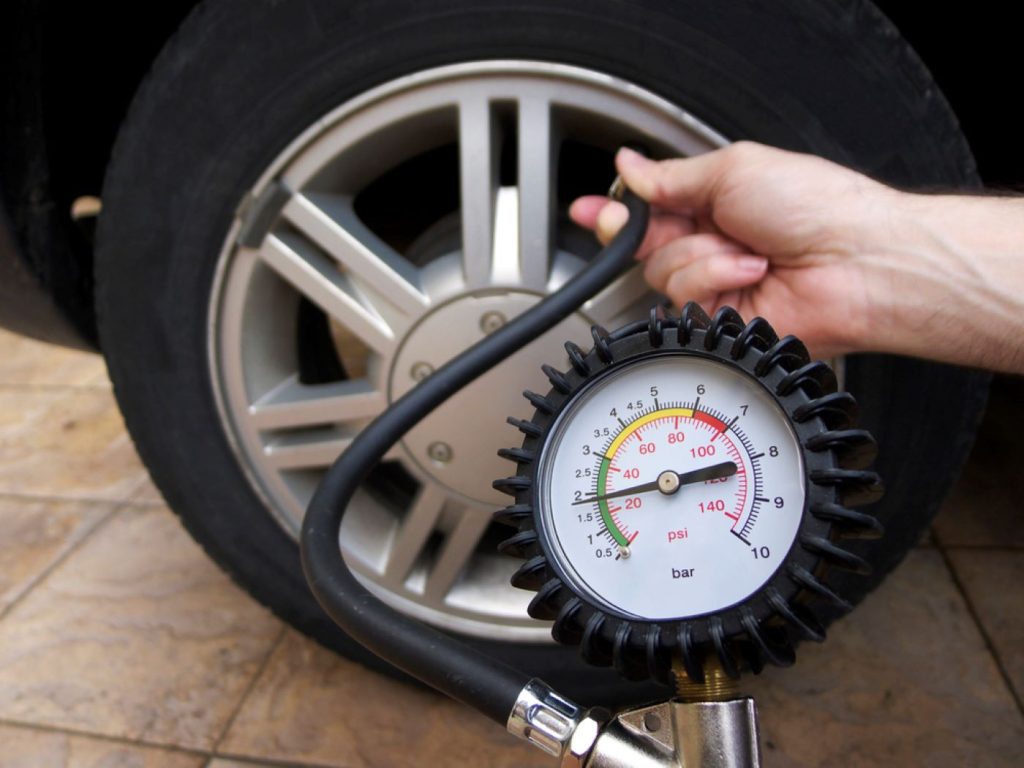
Also Read: Why Imported Vehicles are Gaining Popularity in the US Market
9. Change Oil and Oil Filter
Your car’s engine relies on oil to function smoothly. It cools, cleans, and lubricates the moving parts, keeping your vehicle running at its best. Most vehicle manuals recommend changing your oil and oil filter every 7,500 miles (12,070 kilometers).
However, many service professionals advise changing it every 3,000 miles (4,828 kilometers) or three months. And since summer often means more driving—sometimes under tough conditions—it’s especially important to check your oil before a road trip.
Here’s how to do it: Let your engine run for a few minutes, then park on level ground and shut it off. Open the hood and find the oil dipstick. You’re looking for two things: oil level and oil quality.
If the level is low, you can top it off with another quart or go ahead and do a full oil change. Healthy oil should appear clean and have a brownish-yellow tint. If it’s dark or full of debris, it’s definitely time for a fresh change and a new filter.
Thinking back to your winter checklist? You probably did a lot of these checks before the cold weather set in. Up next, we’ll talk about how to reverse some of those winter-ready preparations for the warmer months.
8. De-Winterize Your Car
If you followed our Top 10 Car Winterizing Tips faithfully, there’s a bit of maintenance you’ll need to reverse now that warmer weather is here. First on the list? Ditch the snow tires. They’re heavier than standard all-season tires and can negatively impact your fuel efficiency.
If your vehicle sat unused for much of the winter—or if it’s been in storage—you’ll want to inspect all of its fluid levels. This includes coolant, transmission, differential, power steering, and brake fluid. Any leaks that formed over winter can go unnoticed until it’s too late.
It’s also a smart move to change the oil, especially if it’s been sitting in the engine for months. Stagnant oil tends to thicken and absorb moisture, which can affect engine performance.
Batteries that haven’t been used in a while may have lost charge or degraded altogether. Depending on its condition, yours might just need a recharge—or a total replacement.
Another critical step: give your car’s undercarriage a deep clean. If you live in an area that gets snow, chances are road salt and debris have built up underneath.
That gunk doesn’t just look bad—it can start eating away at the metal and cause corrosion over time. Plus, excess buildup can insulate the underside of the vehicle, trapping heat and making it harder for the engine and transmission to cool down efficiently.
You can rinse the undercarriage yourself with a garden hose or pressure washer. For heavier salt or grime, a high-pressure steam clean from a professional car wash or detailing service might be a better option.
Next, let’s move on to a few components that are often ignored but crucial for avoiding roadside breakdowns in the summer—your car’s hoses and belts.
7. Check Hoses and Belts
When it comes to summer driving, keeping your engine cool is key. While we’ll cover radiators and coolant shortly, start by inspecting the hoses and belts.
The radiator hoses carry coolant to and from the engine block, while the belts drive the fan that helps regulate temperature even further. If either component fails, your radiator can overheat fast, potentially leaving you stuck on the side of the road.
Inspect your hoses for any cracks, leaks, or loose fittings. They should feel firm to the touch—not soft or squishy.
Over time, hoses deteriorate from the inside due to a process known as electrochemical degradation (ECD), which slowly eats away at the rubber. The areas most prone to failure are the spots near clamps, where the hoses connect to either the radiator or the engine.
Belts also require close inspection. Look for visible wear such as cracks or fraying. If a belt appears slick or shiny, that’s another red flag.
Remove the belt and examine it more thoroughly—if it’s starting to delaminate or peel into layers, it’s time for a replacement. Experts note that the chances of a belt breaking increase significantly after about 36,000 miles (57,936 kilometers).
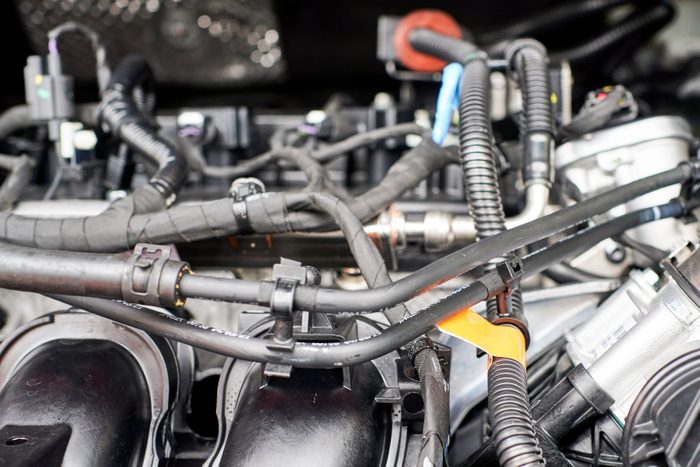
Also Read: 10 Car Maintenance Mistakes That Can Lead to Costly or Dangerous Repairs
6. Change the Air Filter
During the winter months, your vehicle’s air filter can become filled with salt and other heavy debris. When this happens, airflow into the engine is restricted, which can significantly impact fuel efficiency. In fact, replacing a dirty or clogged air filter can boost your gas mileage by up to 10 percent.
So, how do you determine when it’s time to swap out your air filter? The general guideline is every 12,000 miles (19,312 kilometers), but that number isn’t set in stone. The conditions in which you typically drive play a big role.
If you’re frequently driving on dusty backroads or gravel, your air filter is going to get dirty far quicker than someone who spends most of their time on the highway. The best way to know for sure is to remove the filter and inspect it visually.
Surprisingly, a slightly dirty filter can be more effective than a brand-new, spotless one. That’s because accumulated particles in the filter can actually enhance its ability to trap even finer debris that might otherwise slip through.
There’s no exact science behind deciding when to change your air filter. If it looks heavily soiled, then it’s clearly due for a replacement. If it’s just a little dusty, you might still get some use out of it.
However, if you’re gearing up for a summer packed with road trips and daily driving, it’s smart to replace it anyway. Air filters are inexpensive and easy to replace—there’s little downside to being proactive here.
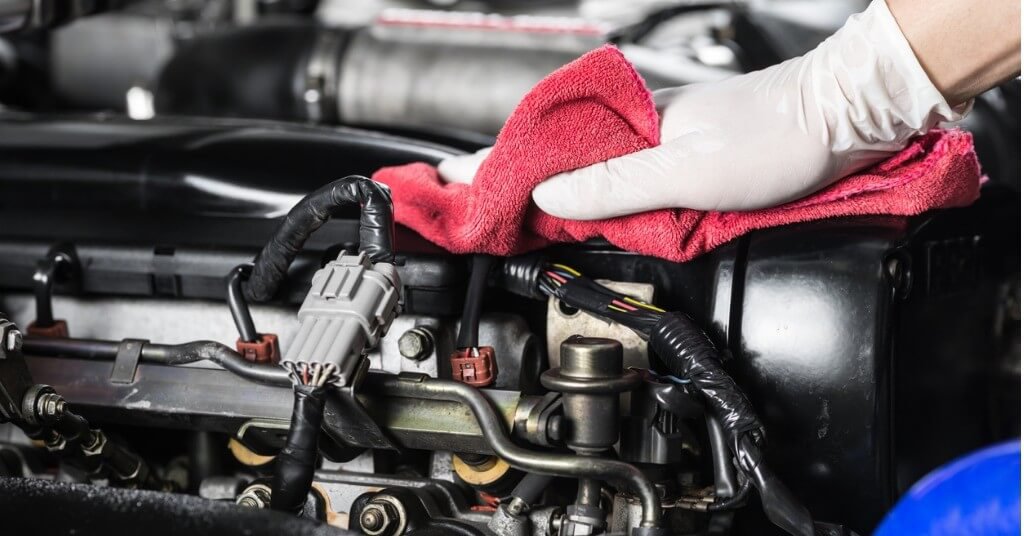
5. Replace Your Windshield Wipers
Summer weather can be unpredictable, and sudden downpours are common. When a storm hits and the rain starts pounding your windshield, having strong, effective wipers is absolutely essential—especially at night, when visibility can shrink to just 15 or 20 feet ahead of you.
Winter conditions take a toll on wiper blades. The rubber often becomes cracked or torn from ice, snow, salt, and freezing temperatures, leaving you with streaky performance when you need clarity the most. If your wipers are leaving streaks behind or require several swipes to clear light rain, it’s a sure sign they need to be replaced.
When it comes to replacing your wipers, it’s better to change out the entire blade rather than just the rubber strip. Most auto parts stores can quickly match you with the correct size and type for your vehicle’s make, model, and year.
If this is your first time changing wiper blades, don’t rush it. Follow the instructions on the package carefully, and take note of how your old blades are attached before removing them. Observing how the originals were installed is often more helpful than any diagram on the new packaging.
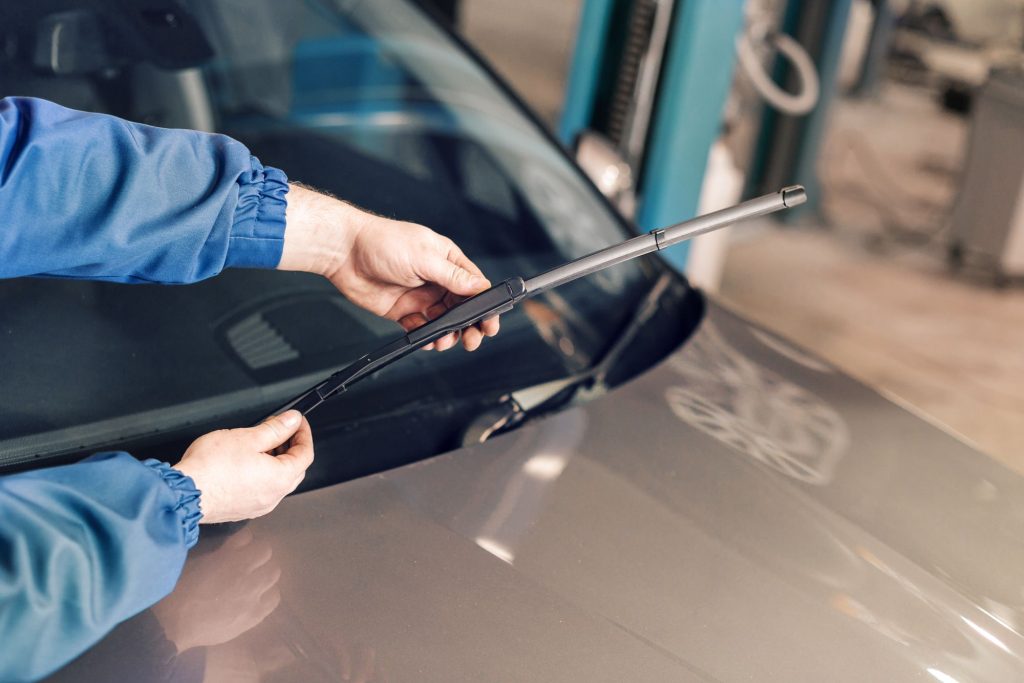
4. Check Your Brakes
Brakes are, without question, the most crucial safety feature in your vehicle. Driving around in the summer heat with worn or malfunctioning brakes is a serious risk you shouldn’t take—especially when you’re hauling your family or friends.
Brake components need to be replaced when the brake pad or brake shoe lining wears down beyond the minimum thickness recommended by the car’s manufacturer or mandated by state regulations. You can have this checked at any general auto repair shop or by visiting a brake specialist.
Here are some clear warning signs that your brakes need attention:
- A brake pedal that feels unusually soft and spongy
- A brake pedal that’s overly firm or hard to press
- A pedal that sits too high or too low compared to normal
- Dashboard warning or indicator lights related to the brake system
- Persistent scraping or grinding noises coming from the brakes
That said, don’t panic if your brakes squeal occasionally. It’s not always a red flag. Squeaking can be caused by many things, including dampness on the pads, rotors, or drums. What you really need to watch out for is a grinding or scraping sound, which usually signals metal-on-metal contact. That’s a major problem and can cause long-term damage to your braking system.
If you suspect there’s a brake issue, don’t put it off. What starts as a minor fix can spiral into a much more expensive and dangerous repair if ignored.
3. Check the Coolant and Radiator
While internal combustion engines are built to handle high temperatures, there’s definitely a ceiling to how hot they can safely get. The ideal temperature for an engine to run efficiently is around 200 degrees Fahrenheit (93 degrees Celsius).
When temperatures go beyond that threshold, moving metal parts can start to melt or fuse together, leading to severe internal damage—and yes, a steep repair bill.
Fortunately, today’s vehicles come equipped with well-designed cooling systems. These systems circulate chemical coolant (antifreeze) through a network of hoses, pumps, fans, and thermostats, keeping the engine within a safe operating temperature range.
But if any component in this system fails—whether it’s low coolant, a leaking hose, a broken belt, a cracked radiator, or even a missing radiator cap—your engine could overheat and leave you stranded.
Summer is especially hard on your cooling system. Getting stuck in a traffic jam on a hot day is one of the fastest ways to overheat. Without airflow over the engine to help regulate temperature, your car relies solely on the cooling system. If it’s not in top shape—say, your coolant is low or a belt is snapped—things can go from warm to critical in no time.
Open the hood and check your coolant level. A general rule of thumb is to flush the radiator and add fresh coolant every two years. Flushing involves using a special chemical to clear out internal buildup and residue inside the radiator. When refilling, make sure to use a 50/50 mix of antifreeze and water. You can also purchase premixed solutions to take out the guesswork.
If you find a small puddle of coolant under your car after it’s been parked for a while, it’s a sign of a leak. Get your vehicle into a shop as soon as possible to have the cooling system inspected.
2. Clean Your Battery
Cold winter mornings are infamous for draining car batteries and causing inconvenient jumpstart situations. But ironically, it’s actually summer heat that does the most damage to your battery.
High temperatures can accelerate the chemical activity inside a car battery, which can lead to overcharging. This overcharging significantly reduces the battery’s lifespan. Additionally, extreme heat can cause the internal fluids of the battery to evaporate, further damaging its functionality.
To keep your battery in good shape, the best approach is to keep it clean and secure. Detach the battery cables on a regular basis and clean the terminals thoroughly. It’s also important to make sure the battery is tightly fastened in place and that all cable connections remain snug and corrosion-free.
If you think your battery might be overcharging or if it’s struggling to hold a charge, take it to a local service shop. They can quickly test it and determine whether it’s performing properly. And if a replacement is needed, make sure you install the correct battery type for your vehicle’s make and model.
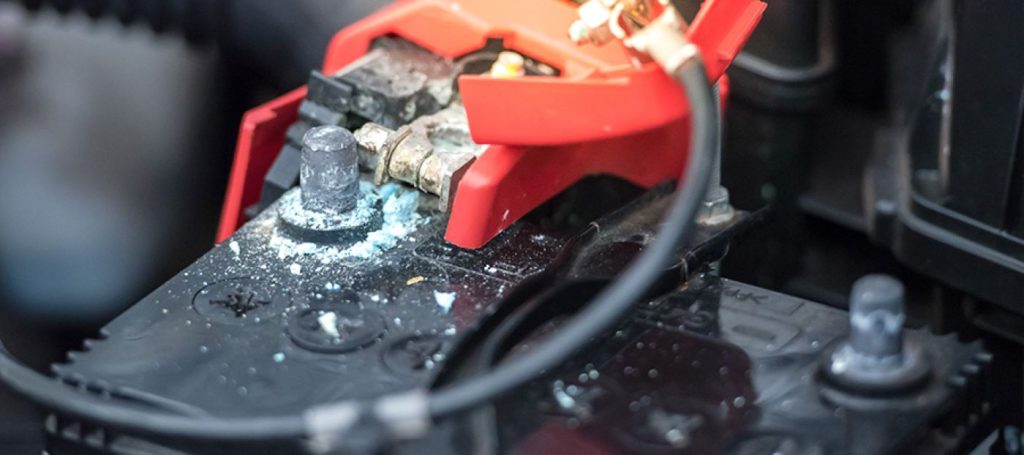
1. Maintain Your Air Conditioning
Anyone who’s ever experienced a failed air conditioning system during a blazing summer day understands just how vital that burst of cold air can be.
One of the best indicators that your A/C system has an issue is if it can’t consistently deliver air that’s at least 50 degrees Fahrenheit (10 degrees Celsius) cooler than the outside temperature.
The most common reason for air conditioning failure is low refrigerant levels, which are usually caused by a leak somewhere in the system. Because modern A/C systems are fairly complex, it’s always best to have a professional mechanic investigate any issues.
Air conditioning repair procedures changed dramatically after 1994, when the federal government banned the use of R-12 refrigerant, more commonly known as Freon. Before the ban, drivers would simply visit a shop, top off their systems with Freon, and head back on the road.
The problem with Freon is that it’s a chlorofluorocarbon, which is highly damaging to the ozone layer. Since leaks were the most common cause of low refrigerant, millions of pounds of Freon were being released into the atmosphere annually through careless refills.
If your car was manufactured before 1994, you’ll need a licensed technician to inspect your A/C system and handle any R-12 refrigerant in compliance with environmental regulations.
In some states, it’s illegal to recharge a leaking system with R-12. The good news is that older cars can be retrofitted fairly easily to run on the newer, environmentally safer refrigerant, R-134a.

